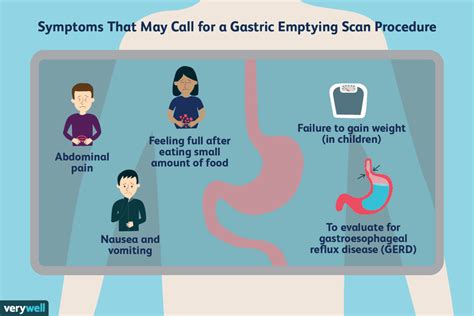Acupuncture, an ancient practice originating from traditional Chinese medicine, has gained widespread recognition for its potential in providing relief from various types of pain. By stimulating specific points on the body, acupuncture aims to restore the flow of energy, or “qi,” which is believed to promote healing and alleviate discomfort. For those considering acupuncture as a method for pain management, here are 12 valuable tips to enhance your experience and possibly improve outcomes:
Understand Your Pain: Before starting acupuncture treatments, it’s crucial to have a clear understanding of your pain. Keeping a pain diary can help you track when your pain occurs, its severity, and any factors that might trigger or relieve it. This information can be invaluable for your acupuncturist in devising a treatment plan tailored to your needs.
Find a Licensed Acupuncturist: Ensure that your practitioner is licensed and experienced. A licensed acupuncturist will have the necessary training and knowledge to perform the procedure safely and effectively. You can ask for referrals from your healthcare provider or check with your state’s licensing board for a list of certified practitioners in your area.
Be Prepared for Your First Session: During your initial consultation, be prepared to discuss your medical history, including any medications you’re currently taking, and a detailed description of your pain. This information helps your acupuncturist understand your condition better and plan the most appropriate treatment strategy.
Understand the Procedure: Acupuncture involves the insertion of thin needles into specific points on your body. It’s generally painless, though you might feel a slight pinch when the needles are inserted. The needles are left in place for 15 to 30 minutes, and during this time, you might experience a sensation of heaviness or tingling, which is a sign that the treatment is working.
Relaxation is Key: Stress and tension can interfer with the effectiveness of acupuncture. Practice relaxation techniques such as deep breathing, meditation, or yoga to help you relax during and between sessions. A calm state can enhance the body’s response to acupuncture.
Dietary Considerations: Certain foods can either enhance or detract from the effects of acupuncture. Eating a balanced diet rich in fruits, vegetables, and whole grains can support your overall health and potentially improve the outcomes of your treatments. Avoid heavy meals or caffeine before a session, as they can cause discomfort or interfere with your body’s energy.
Stay Hydrated: Drinking plenty of water before and after your sessions can help your body respond better to the treatment. Hydration is essential for maintaining healthy blood flow and facilitating the body’s natural healing processes.
Combine with Other Therapies: Acupuncture can be even more effective when combined with other pain management techniques such as physical therapy, massage, or herbal remedies. Discuss with your healthcare provider or acupuncturist about integrating these therapies into your treatment plan.
Be Patient: Acupuncture is not a quick fix but rather a process that requires patience and commitment. It may take several sessions before you start noticing significant improvements in your pain levels. Consistency and persistence are key to achieving the best results.
Communicate with Your Acupuncturist: Open communication is crucial for the success of your treatments. Inform your acupuncturist about any changes in your pain, new symptoms, or concerns you might have. This feedback is invaluable in adjusting your treatment plan to better meet your evolving needs.
Consider the Frequency of Sessions: The frequency and number of sessions can vary significantly from one person to another, depending on the nature and severity of the pain. Initially, you might need to attend sessions more frequently, with the possibility of reducing the frequency as your condition improves.
Integrate Lifestyle Changes: While acupuncture can provide significant relief from pain, it’s also important to address the underlying causes of your discomfort. This might involve making lifestyle changes such as improving your posture, exercising regularly, getting enough sleep, and managing stress. These changes can not only complement the effects of acupuncture but also contribute to your overall well-being.
In conclusion, acupuncture offers a promising approach to pain relief, especially when combined with a comprehensive understanding of your condition, a commitment to the treatment process, and a willingness to make supportive lifestyle changes. By following these tips and working closely with a qualified acupuncturist, you can enhance the potential benefits of acupuncture and move towards a life with less pain and greater vitality.
For those seeking to understand more about how acupuncture works or its applications beyond pain relief, it’s worth exploring the rich history and theoretical foundations of this traditional practice. From its origins in ancient China to its current integration into modern healthcare systems around the world, acupuncture represents a fascinating example of how traditional knowledge can inform contemporary approaches to health and wellness.
How many acupuncture sessions are typically needed for pain relief?
+The number of acupuncture sessions required for pain relief can vary significantly depending on the individual, the nature of their pain, and their response to the treatment. While some people may experience relief after just a few sessions, others might require a series of treatments over several weeks or months.
Are there any risks associated with acupuncture?
+When performed by a licensed and experienced practitioner, acupuncture is generally considered safe. However, as with any invasive procedure, there are potential risks, including pain at the needle site, bleeding, bruising, and rare instances of infection. It’s essential to discuss any concerns or questions you have with your acupuncturist before undergoing treatment.
Can acupuncture be used in conjunction with other pain management strategies?
+Yes, acupuncture can be effectively combined with other pain management strategies, including physical therapy, medication, and lifestyle changes. This integrated approach can often lead to better outcomes, as it addresses the pain from multiple angles. Always consult with your healthcare provider before starting any new treatments to ensure they complement each other safely and effectively.



